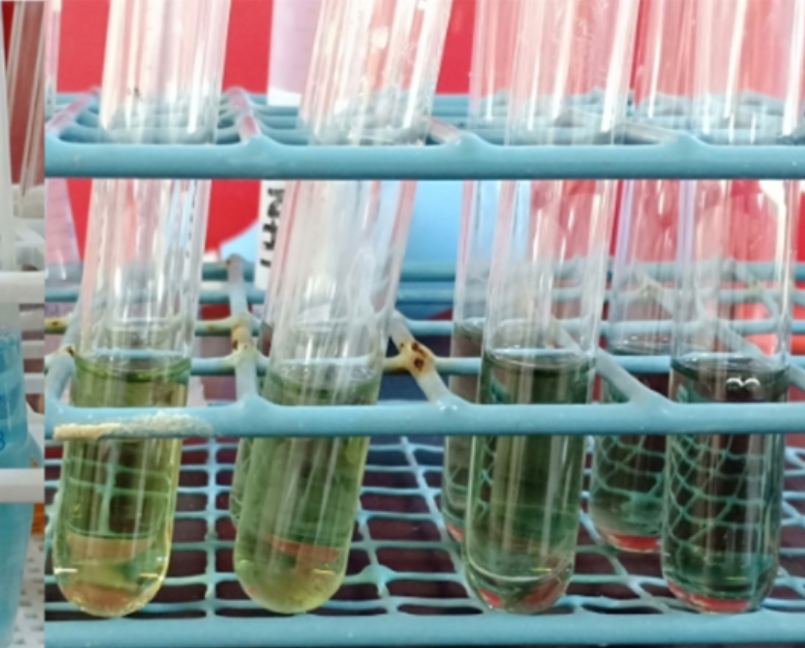Saba banana peels offer many health benefits including potential effectiveness in treating obesity and related disorders
02 Aug 2024

This study presents a comprehensive investigation into the potential health benefits of saba banana peel (SBP). The study reveals that SBP, traditionally considered agricultural waste, possesses significant nutritional and health-promoting components. Laboratory analysis indicated a well-balanced composition, with notable levels of moisture, crude fat, crude protein, total ash, crude fiber, and nitrogen-free extracts. These dietary components have been shown to provide the body with energy, help prevent disease and allow the body to function properly. Furthermore, the presence of antioxidant activity and essential nutrients such as vitamin C and bioactive compounds like phenols, flavonoids, and tannins further enhances the health-promoting potential of SBP.
The findings also suggest that SBP may have applications in special food formulations, particularly for individuals concerned with obesity and associated disorders. Notably, SBP exhibited significant pancreatic lipase inhibition, comparable to the effectiveness of the lipase inhibitor drug Orlistat, and cholesterol micellar solubility inhibition, approaching the efficacy of the cholesterol-lowering drug Cholestyramine. These results not only position SBP as a valuable source of bioactive compounds but also highlight its potential utilization in the development of functional food products and nutraceuticals, offering banana farmers and processors an opportunity for additional revenue while addressing health-related concerns. Overall, the paper contributes valuable insights into transforming agricultural by-products into functional and health-promoting resources.
The paper addresses a significant issue in the Philippines, where the banana industry is a major contributor to the economy. Despite being the second-largest fruit crop globally, banana cultivation generates a substantial amount of by-products and waste, particularly in the form of peels, which constitute 40% of the total weight of fresh bananas. Currently, banana peels are predominantly disposed of as solid waste incurring substantial costs and posing environmental concerns like greenhouse gas emissions and soil and water pollution. The paper’s exploration of the nutritional, antioxidant, and lipid-lowering properties of saba banana peels not only highlights the potential health benefits of an otherwise discarded agricultural by-product but also presents an opportunity to alleviate environmental and financial concerns associated with its disposal. By demonstrating that these peels contain valuable nutritional and functional properties and can be transformed into valuable raw materials with applications in food products, the study contributed to the efforts in promoting the development of sustainable practices for the banana industry. This has broader implications for small- to medium-scale processing units in the banana industry, potentially enhancing their overall economic viability and sustainability. In a country like the Philippines, where saba banana production plays a crucial role in the agricultural sector, the successful utilization of saba banana peels not only benefits the economy but also addresses environmental concerns associated with waste management.
Authors: Paul Alteo A. Bagabaldo (Institute of Human Nutrition and Food, College of Human Ecology, University of the Philippines Los Baños), Liezl M. Atienza (Institute of Human Nutrition and Food, College of Human Ecology, University of the Philippines Los Baños), Katherine Ann T. Castillo-Israel (Institute of Food Science and Technology, College of Agriculture and Food Science, University of the Philippines Los Baños), Aimee Sheree A. Barrion (Institute of Human Nutrition and Food, College of Human Ecology, University of the Philippines Los Baños), Antonio C. Laurena (Institute of Plant Breeding, College of Agriculture and Food Science, University of the Philippines Los Baños), and Maria Amelita C. Estacio (Department of Basic Veterinary Sciences – College of Veterinary Medicine, University of the Philippines Los Baños)
Read the full paper: https://www.ukdr.uplb.edu.ph/cgi/viewcontent.cgi?article=1054&context=pas
